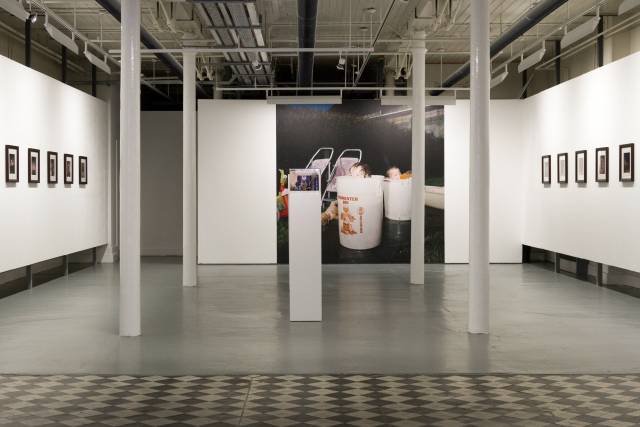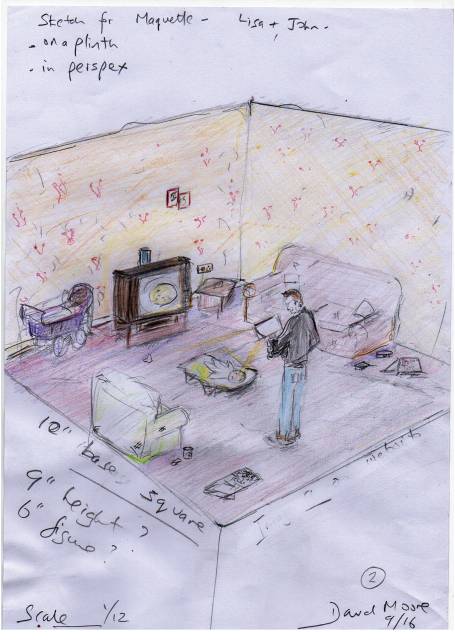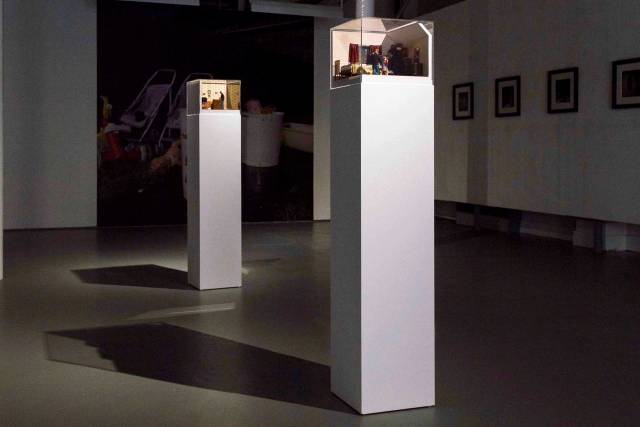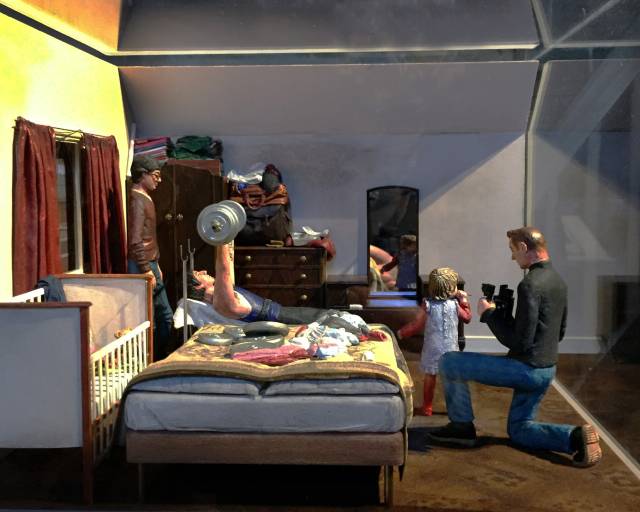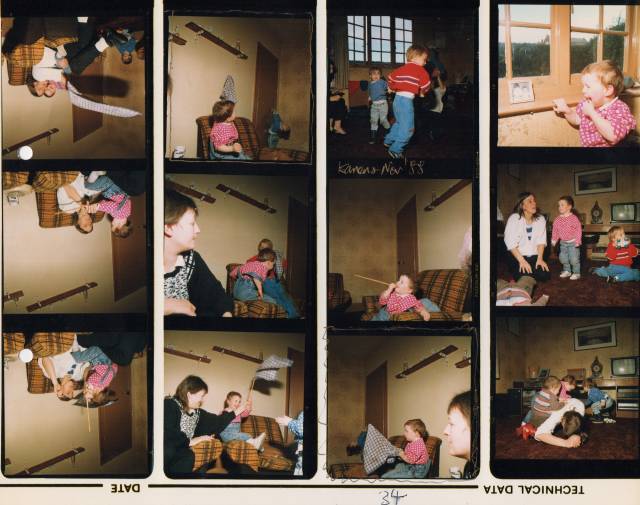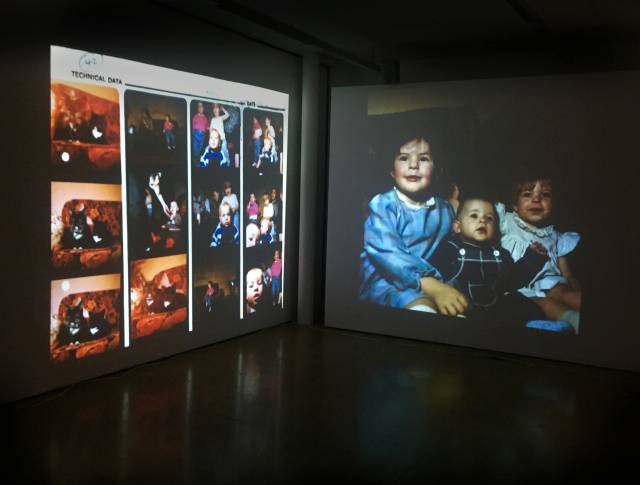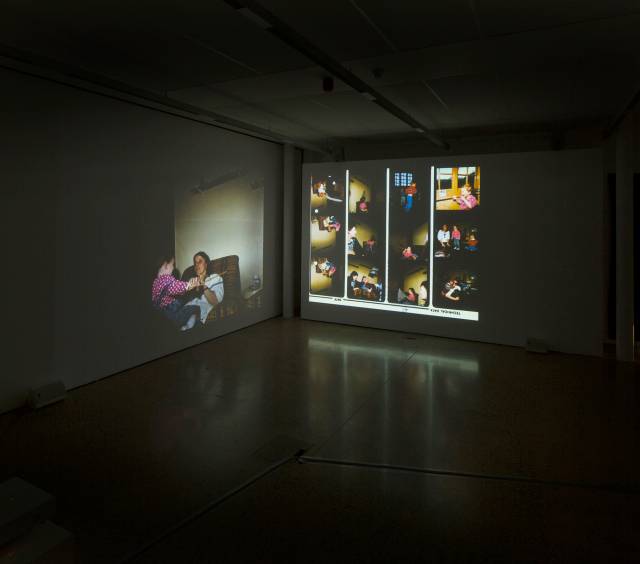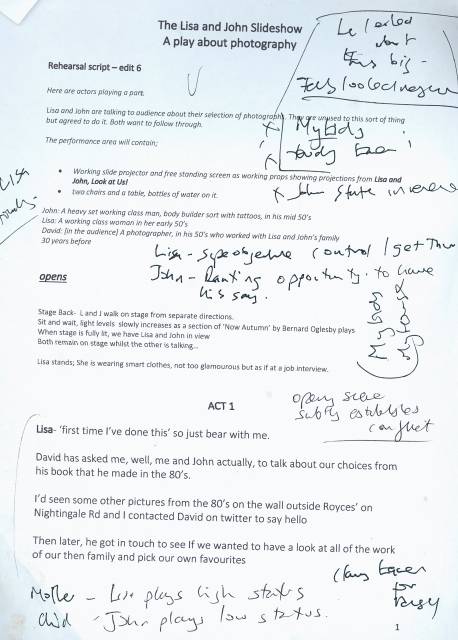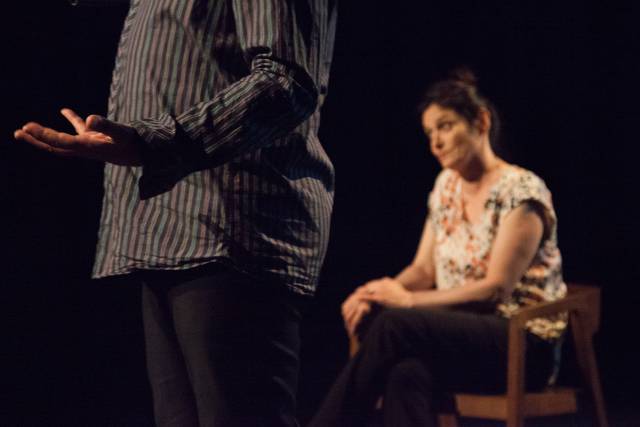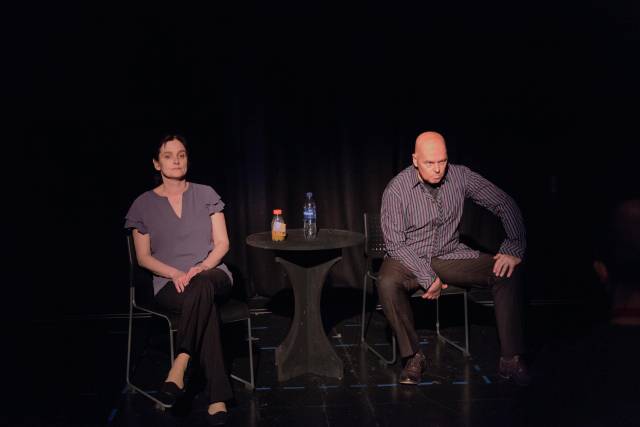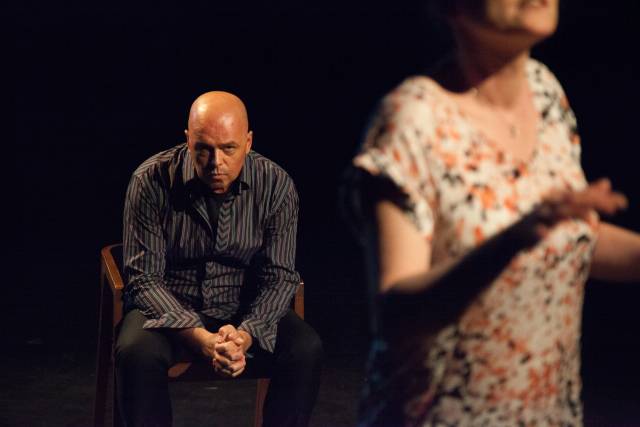Project narrative
I invited Lisa and John to participate in the production of a new selection of photographic images from the Pictures from the Real World archive, stepping into the production space, refuting, revalidating or proposing “new beginnings” for the lives of the images of themselves. Their recollections did not always match and the photographs became, as Annette Kuhn describes, material for interpretation, “to be solved like a riddle: read and decoded, like clues left behind at the scene of a crime” (Kuhn, A, 2003).
The three elements of Lisa and John build on one another, from the maquettes to the immersive installation to the performance, to progressively “open up” the original works and query the assumptions behind their making. The shifts between art forms, and between 2D and 3D, hold out the possibility of new insights. Sometimes such juxtapositions are revealing, at other times opaque.
Lisa and John: Oh My Days!
Scale models,12 × 12 inches on base, in Perspex containers, mounted on 1.5m plinths, first exhibited at Format International Festival, Derby, 2017
I was interested in the legacy-burdened notion of the museum diorama. I commissioned and directed a theatrical model-maker, who, guided by sketches and archive photographs, built two scale models referencing key photographs from Pictures from the Real World, and added a figure of myself, the photographer, at the moment of exposure.
The spot-lit models, aligned to specific images within the original series, allowed viewers to circumnavigate that instant of exposure to consider the original live event of photographic production. Here three-dimensionality opened up the process of the photographic event as each model offers a view of the wider context of the photograph, including the figure of the photographer who, as a “discordant element in these domestic scenes” (Williams, V, 2019), is caught in flagrante at the apparent moment of exposure, revealing part of the ontological mechanism of representation.
Lisa and John, Look at Us!
Two-screen immersive installation with audio and moving projections, 105 minutes, first installed at London Gallery West, University of Westminster, 2018
‘‘The construction of linear perspective declares the view of a one-eyed and immobile spectator as a norm – and this view is itself assumed to be natural, scientific, and objective” – Hito Steyerl Look at Us! is a two-screen presentation within a walk-in environment that, in the light of the Steyerl’s comment, raises questions about perceptual norms. I constructed a projection area that reiterated the design and scale of the smaller models. Within it, Lisa and John each have individual outputs simultaneously playing their own audio-visual narratives from the unedited recordings of my separate conversations with each of them.
Each track directs the progression of images. Audiences have the opportunity to move between “Lisa’s speaker” and “John’s speaker” during the performance; as each audio is played, the pair occasionally discuss the same photograph or related circumstances with differing recall. When compared to the singular positioning of photographic images on a gallery wall, this presentation offers the audience agency: the ability to respond, to move, to select audio and physical viewpoints that affect their reading.
The Lisa and John Slideshow
Live theatrical performance, 45 minutes, first performed at the Derby Studio Theatre, 2017
Using the audio, I developed an initial draft of a verbatim script that allowed Lisa and John’s own selection of photographs to drive the action. Aspects of the performance were devised, and Lisa and John’s relationship was explored through a variety of rehearsal methodologies. This was achieved initially as our actors, once in character, “met” for the first time on a road trip to meet the real Lisa and John in Derby.
The establishing scene in The Lisa and John Slideshow reveals a momentary tableau vivant within which both actors return the gaze of the audience from a static position as the stage lights rise from total darkness. In performance, the characters present their image choices to the audience using a slide projector. “Lisa” and “John” engage the audience, introducing the content of the photographs as each image appears on the screen. They argue about the identity of people within the photographs, display grief, and subtly goad each other, as well as occasionally becoming lost in their own reveries.
Both characters occasionally address “David” the photographer, who is in the audience, criticising his methods and picture choices in the original series and discussing misrepresentation. As “John”, expressing frustration, says of the original archive of Pictures from the Real World: “I’m just looking at the pictures and thinking we looked like poor people, but I was working… we weren’t on the dole.” (Moore D, 2019)
| Creators | Moore, D. |
|---|---|
| Collaborators | Williams, Val (Curator), Dent, Gavin (Producer), Toogood, Sarah (Actor), Mosley, Alan (Actor), Davies, Rachel (Film editor), Dye, Liberty (Production personnel), Brett, Elizabeth (Animator), Mosley, John (Researcher), Wheatley, Lisa (Researcher) and Regan, Lucie (Production personnel) |
| Description | As a collaborative and open-ended exploration of a photographic archive, via a variety of multimedia art forms, Moore’s research interrogates assumptions concerning normally concealed processes underlying the production of realist works or documentary. In this respect, the research relocates the photographic images in the wider field of contemporary art, using the conventions of verbatim theatre and immersive environments to critique documentary production within the |
| Portfolio items | Pictures from the Real World [2017] |
| Lisa and John- Look at Us! | |
| Lisa and John-Oh my Days! | |
| The Lisa and John Slideshow [Script] | |
| The Lisa and John Slideshow | |
| Year | 2017 |
| Publisher | University of Westminster |
| Keywords | Lisa and John |
| The Lisa and John Slideshow | |
| David Moore Photographer Archive | |
| Documentary Photography | |
| Archive intervention | |
| CREAM Portfolio | |
| Funder | Derby City Council |
| University of the Arts London (UAL) | |
| Arts Council of Northern Ireland | |
| Belfast Exposed | |
| Digital Object Identifier (DOI) | https://doi.org/10.34737/v77w2 |
